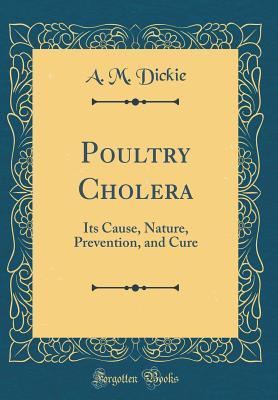Read Poultry Cholera: Its Cause, Nature, Prevention, and Cure (Classic Reprint) - A M Dickie | PDF
Related searches:
Poultry Cholera; Its Cause, Nature, Prevention, and Cure: M
Poultry Cholera: Its Cause, Nature, Prevention, and Cure (Classic Reprint)
Poultry cholera; its cause, nature, prevention, and cure, - CORE
Cholera: its nature, cause, and treatment : simply
Cholera: Causes, Symptoms, Treatment, and Prevention
Cholera: Causes, Symptoms, and Diagnosis
Cholera - Symptoms and causes - Mayo Clinic
Poultry production and the environment – a review
Fowl cholera is also called avian cholera, avian pasteurellosis, avian hemorrhagic septicemia. As the causative agent is pasteurella multocida, it is considered to be a zoonosis. In parental flocks, cocks are far more susceptible than hens.
The deadly effects of the disease are the result of a toxin the bacteria produces in the small intestine. The toxin causes the body to secrete enormous amounts of water, leading to diarrhea and a rapid loss of fluids and salts (electrolytes).
Birds' cholera, also known as pasteurellosis, is a bacterial disease that attacks all varieties of wild and domestic poultry. Although pasteurellosis is well studied, it still manages to cause impressive damage to domestic poultry farming today. It has been leading its history since 1782, when it was studied in france.
In addition to the nuisance they cause, flies and mosquitoes can transmit diseases, such as cholera, dysentery, typhoid, malaria, filaria and dengue fever. Although less often reported than flies and mosquitoes, rats and similar pests are also a local nuisance associ- ated with poultry production.
Fowl cholera is not limited in its occurrence to�any particular oeographical location. It is probably most prevalent in the middle west, and it is a serious problem at poultry-fattening plants and among feeder poultry in transit by railroad to eastern markets but not in the industry generally.
Cause avian cholera is an infectious disease of domestic and wild birds caused by the bacteria pasteurella multocida. Multocida that infect different species of birds and mammals and cause varying degrees of disease; however, this description will focus primarily on avian species.
Cholera is caused by a number of types of vibrio cholerae, with some types producing more severe disease than others. It is spread mostly by unsafe water and unsafe food that has been contaminated with human feces containing the bacteria.
Causes of cholera cholera is caused by bacteria called vibrio cholerae. The disease’s deadly effects are the result of a strong toxin known as ctx that is produced by these bacteria in your small.
The symptoms of cholera, commensurate with the cir cumstances of the case,—the previous state of health and� constitution of the individual,—the length of exposure to� the epidemic or other immediate exciting cause of the at-tack,—its nature and virulence,—the state of the atmo sphere as to humidity and temperature, and other modify.
Avian cholera, caused by the bacterium pasteurella multocida, is a common and important infectious disease of wild birds in north america.
Fowl cholera (fc) is a highly contagious bacterial disease of domestic and wild birds worldwide. It is caused by pasteurella multocida, a gram-negative, non-spore-forming, rod shaped bacteria.

Post Your Comments: